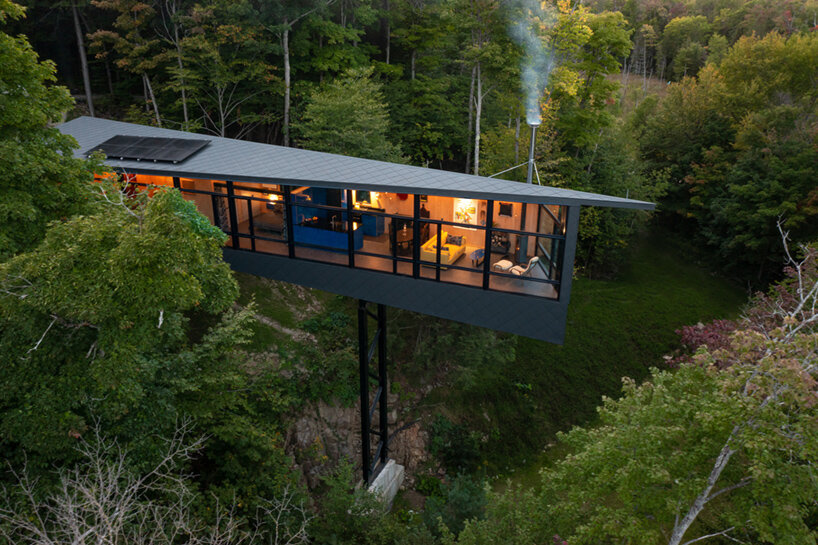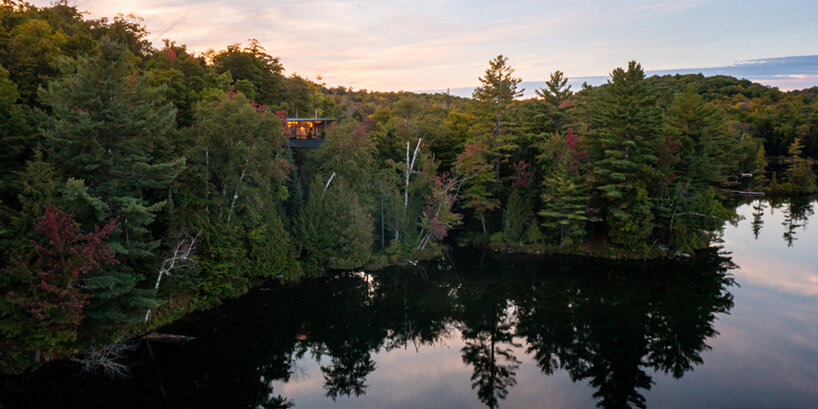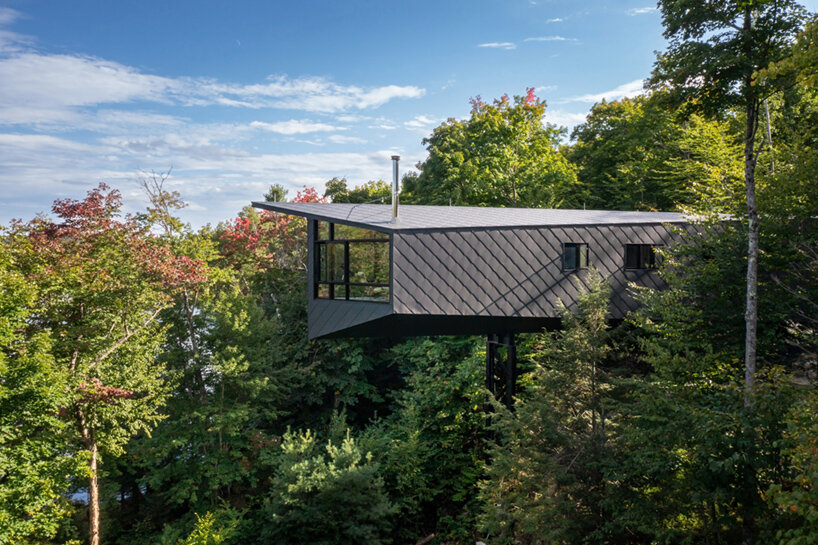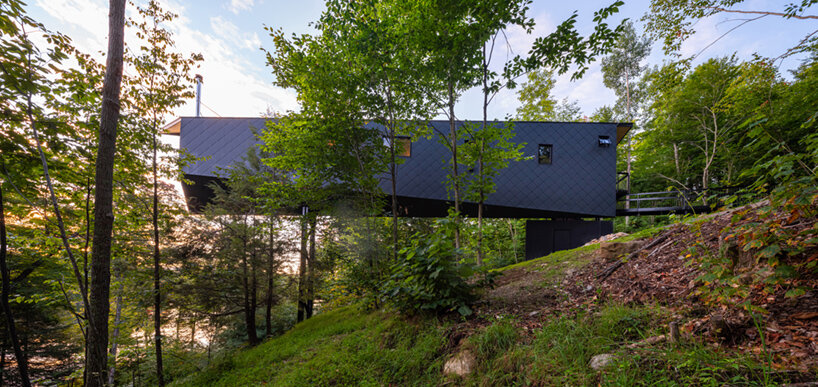kariouk architects perches this m.o.r.e cabin atop stilts above the canadian forests
a dwelling separated from the landscape
Canadian practice Kariouk Architects celebrates the iconic log cabin cottage of the North American wilderness through a more purist — yet still contemporary — lens. The team notes that the typical modern cabin stands as a ‘woodsy’ version of the suburban home with all its modern conveniences, meaning that these buildings will only appear to be ‘at one with the land,’ suggesting a reduced environmental impact.
The m.o.r.e. Cabin inverts this idea by entirely separating itself from the landscape atop stilts, thus maintaining a more sustainable existence than other cottages. The team notes: ‘This unraveling of eco-fictions is not cynical, but optimistic: while organic environments are being degraded, what remains can be engaged more responsibly.‘
 images © Scott Norsworthy | @norsworthyscott
images © Scott Norsworthy | @norsworthyscott
kariouk architects’ respect for the land
Kariouk Architects (see more here) designs its m.o.r.e. Cabin to touch the land lightly. The architecture is sustainably constructed with a low-waste CLT timber structure, a reduction in foundation size through a steel mast, and a system of off-grid power and high-efficiency heating. What’s more, the elevated dwelling even introduces a new home for endangered bats.

‘m.o.r.e. that one way to skin a home’
The team at Kariouk Architects perches its m.o.r.e. Cabin atop a single concrete footing and a steel ‘mast’ placed within the required setback. The architects explain: ‘Avoiding a conventional large foundation preserved the watershed and prevented erosion, as did elevate the construction zone. The use of carbon-intensive concrete was also reduced for a lower carbon footprint.
‘m.o.r.e. Cabin is built with suitably-sourced CLT panels and glulam beams. The CLT was milled offsite and then hoisted into place, avoiding damage to the landscape by the maneuvering of construction machinery.‘

Cabin-as-Beam
The structural innovations which shape Kariouk Architect’s m.o.r.e. Cabin were informed by the group’s environmental considerations. The team continues: ‘Our challenge became to develop a structural strategy using cantilevered CLT panels as a response to the zoning variance that we obtained; CLT is fundamentally deployed in vertical/compressive sections, not horizontally in tension.
‘Conventional 5-ply CLT is too heavy to support itself over longer spans. The solution used thinner 3-ply CLT, with structural capacity ensured through “folding” (just like paper gains strength when folded).’

a solar-powered cabin over the woods
With its elevated perch, the breezy cabin receives excellent cross-ventilation. Interiors are heated by way of a high-efficiency ‘green carbon’ wood stove, while thermal comfort is ensured by the mass of the CLT structure. The architects comment on the home’s relationship with its nocturnal neighbors: ‘One goal of the home was to create extensive lodging for endangered brown bats. Bat pods were integrated into the mast to provide safety from climbing predators and a clear flight path to the lake.’ 

